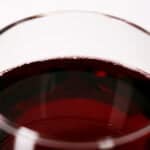Homemade Cherry Wine
Cherry Wine is easy to make, whether from fresh fruit or frozen. This Cherry Wine Recipe will show you how. Make now, drink in one year.
Servings: 1 Gallon
Calories: 6981kcal
Equipment
- Cherry Pitter
- 2 gallon fermenter bucket and lid
- 1 air lock and stopper
- Siphon, siphon tubing.
- 1 - 2 1 gallon glass carboys
Ingredients
- 6 lbs fresh cherries*
- 3 lbs white sugar
- 1 gallon spring water
- ½ teaspoon acid blend
- ½ teaspoon pectic enzyme
- 1 teaspoon yeast nutrient
- ¼ teaspoon wine tannin
- 1 packet Red Star “Pasteur Red” yeast
- Wine stabilizer of choice optional
Instructions
- Rinse and pick through cherries, removing any that are moldy, etc. Remove stems and pits, chop them up.
- Place in a large pot, along with the sugar. Using a potato masher or VERY clean hands, stir and mash cherries.
- Add water, stir well. Heat to ALMOST boiling, then simmer gently for 30 minutes. Stir in acid blend, enzyme, nutrient, and tannin.
- Pour mixture into a freshly sanitized fermenting bucket. Cover with sanitized lid and air lock, allow to cool to room temperature (overnight).
- The next morning, give the mixture a quick stir with a long, sanitized spoon, and – using sanitized equipment – take a gravity reading of the liquid (strain out any cherries). Keep track of the number! (This is an optional step, but will allow you to calculate your final ABV %)
- Sprinkle yeast into fermenter, cover with sanitized cover and air lock. Within 48 hours, you should notice fermentation activity – bubbles in the airlock, carbonation and /or swirling in the wine must. This means you’re good to go!
- After a week or so, use your sanitized siphon setup to rack the must into a freshly sanitized carboy. Put the carboy somewhere cool (not cold!), and leave it alone for a month or so.
- Using sanitized equipment, rack the wine off the sediment, into a clean, freshly sanitized carboy. Cap with sanitized airlock, leave it alone for another 2-3 months.
- Rack one more time, leave it for another 3 months or so.
- When your wine has been racked a few times and shows NO more fermenting activity for a month or so (no bubbles in the airlock, no more sediment being produced, you can move on to bottling. **
- If stabilizing, follow the instructions on your selected type of wine stabilizer to stop fermentation. For potassium sorbate, this needs to be done 2-3 days before bottling.
- Using sanitized equipment, take a gravity reading, then rack the wine into clean, sanitized bottles. Cork.
Notes
* If using frozen cherries, allow them to thaw. Don't bother straining them - just skip the sorting/pitting step!
** If you're sampling as you're going, and your wine reaches the right sweet/dry level for you, you don't need to wait for the fermentation activity to end. Just skip ahead to stablization!
IMPORTANT:
Software generates nutritional information based on the ingredients as they start, and is unable to account for the sugars consumed in the fermentation process. As such, the calories, sugars, and carbs are shown WAY higher than reality.
Additionally, the listed value is for the entire recipe, NOT per serving.
Nutrition
Calories: 6981kcal | Carbohydrates: 1796g | Protein: 29g | Fat: 5g | Saturated Fat: 1g | Sodium: 203mg | Potassium: 6042mg | Fiber: 57g | Sugar: 1707g | Vitamin A: 1742IU | Vitamin C: 191mg | Calcium: 481mg | Iron: 10mg
